On the 27th November 1861, Parramatta was proclaimed a municipality under the Municipalities Act of 1858.
The Municipalities Act of 1858 allowed for new municipalities – a town or district that has a local government – to be created on the petition of at least fifty resident householders. When Parramatta was declared a municipality, the Parramatta Municipal Council was formed and with it the beginnings of local government in the Parramatta area.
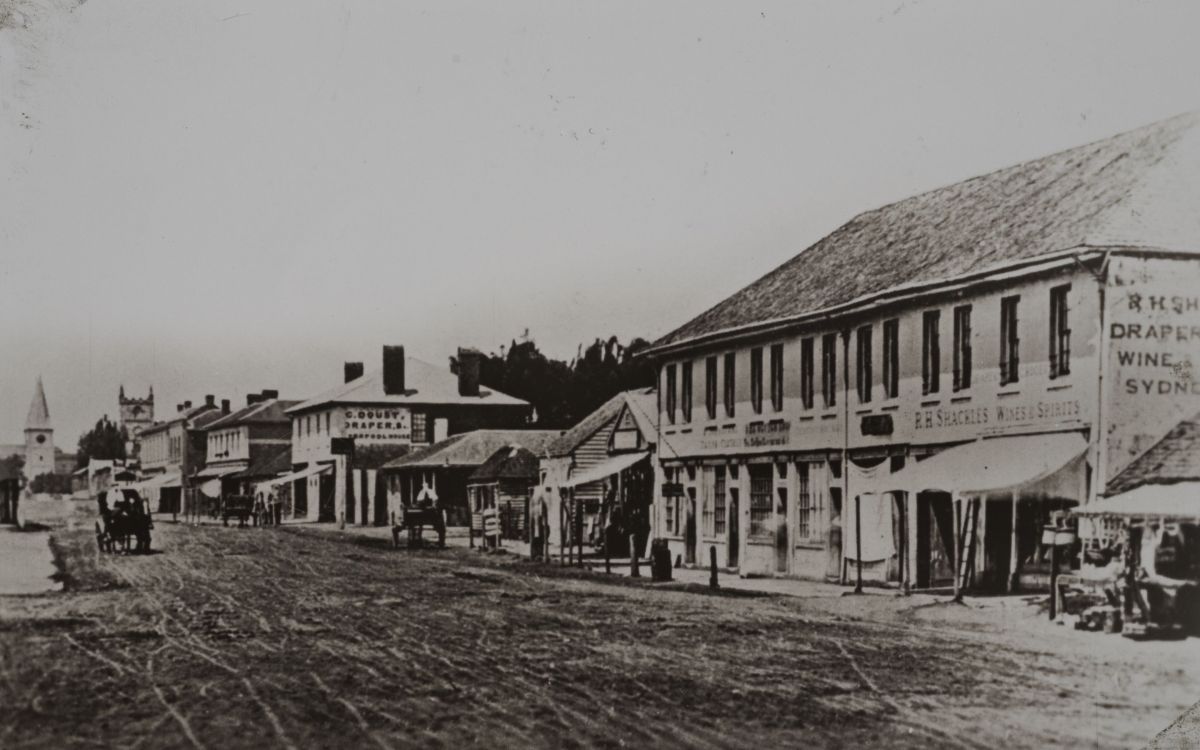
Unlike the earlier district councils in NSW, the Municipalities Act allowed for voluntary incorporation and was to be petitioned for by eligible residents. For an area to be incorporated as a municipality, inhabitants were to present a signed petition to the Governor and the municipality would be proclaimed provided that within three months no counter petition containing a greater number of signatures had been presented.
Each municipality was to be governed by an elective council of six or nine members, depending on whether the town’s population was less or more than 1000. The members of the council, designated either aldermen or councillors, were to be elected by adult landowners via ballot and held office for three years, with one third retiring annually. The mayor or chairman was to be elected annually by and from the aldermen or councillors.
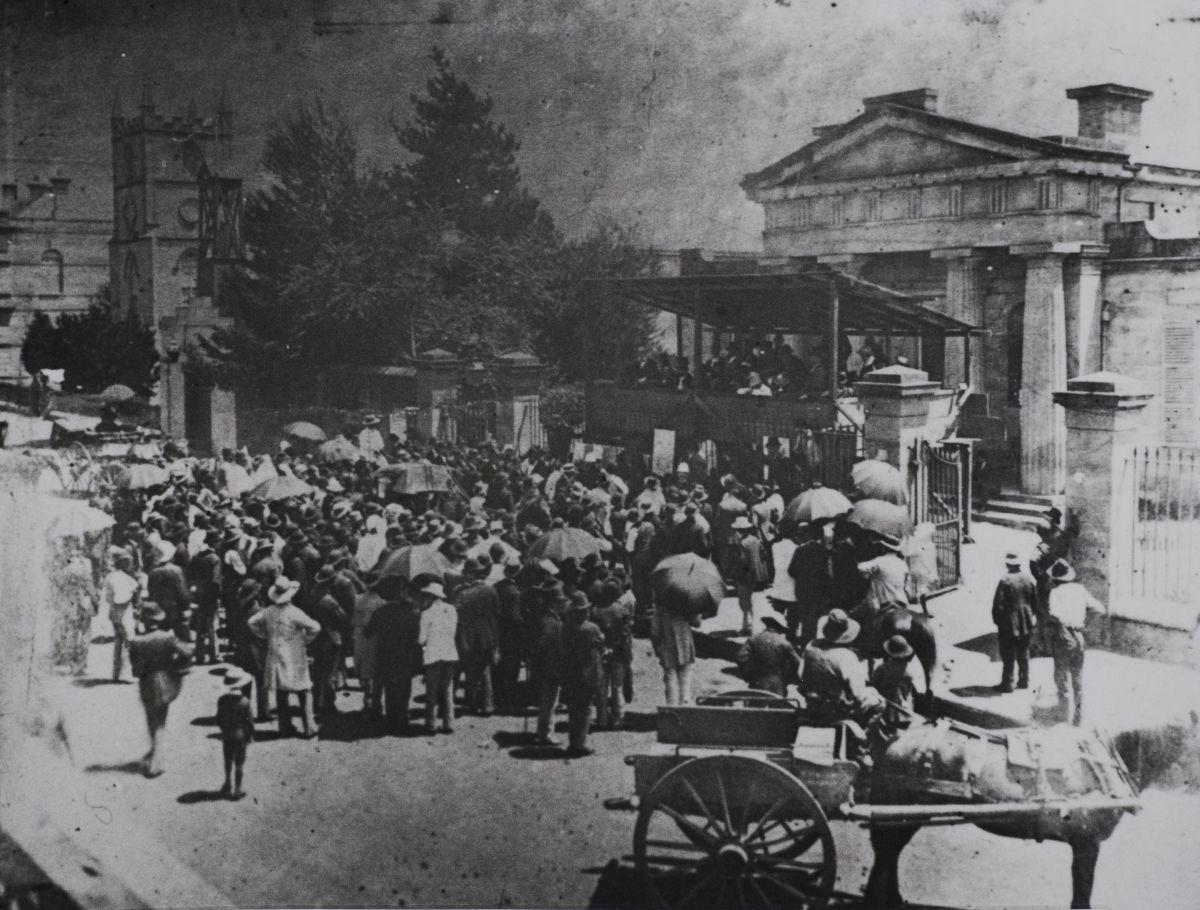
In addition to the formation of the Parramatta Municipal Council, the Act set out the boundaries that formed the municipality of Parramatta. The Act allowed for adjoining areas to be added to an existing municipality, or for areas to be split off to form a new municipality.
The Act gave the Council the authority to appoint salaried or waged officers and servants. The Council could levy rates, borrow money and establish committees. In turn, they were responsible for abating and removing nuisances, the care and management of public roads, wharves, bridges, jetties, cemeteries, water supply, street-lighting and sewerage. Councils were also responsible for establishing hospitals, asylums, public libraries, museums and botanical gardens.
The 1861 proclamation of Parramatta as a municipality in the NSW Government Gazette can be read online here.
Petitioning for the Incorporation of Parramatta
As early as December 1844, newspaper reports emerge referencing community meetings to discuss the incorporation of the town. The Parramatta Chronicle reported that meetings were held at McKay’s Australian Arms on the 10th December, 1844 and the 7th January, 1845 with upwards of 300 people in attendance to debate the subject of the incorporation of the town. While no resolution was reached, it was agreed that a body of seventeen citizens known as the Parramatta Mutual Protection Committee would be formed to act in liaison with the Legislative Council. Incorporation is again discussed on the 28th February, 1846 within the Cumberland Times. The articles reflect that the residents of Parramatta who were for incorporation were so because of the apparent dictatorial rule of the police magistrates appointed by the Governor, and their desire to be governed by authorities of their own choosing.
Jumping forward a decade, as the Municipalities Act 1858 was introduced, the Sydney Morning Herald reported of a meeting held at the Red Cow Inn on the 23rd November, 1858 with around 200 people in attendance. The following year, on the 3rd January, 1859, another public meeting was held in the square opposite the King’s School to discuss incorporation. While neither of these meetings were conclusive, the event in January seems to have been heated – with a rotten egg reportedly thrown at one point.
A petition was presented to the Governor in July of 1859 with 200 signatures for incorporation, however, by October a counter petition with “more numerous signatures” had been prepared. Just under two years later, in May 1861, another petition was presented. By August, a second petition and a counter-petition had been submitted for consideration. Incorporation was approved and on the 27th November, the municipality of Parramatta was proclaimed.
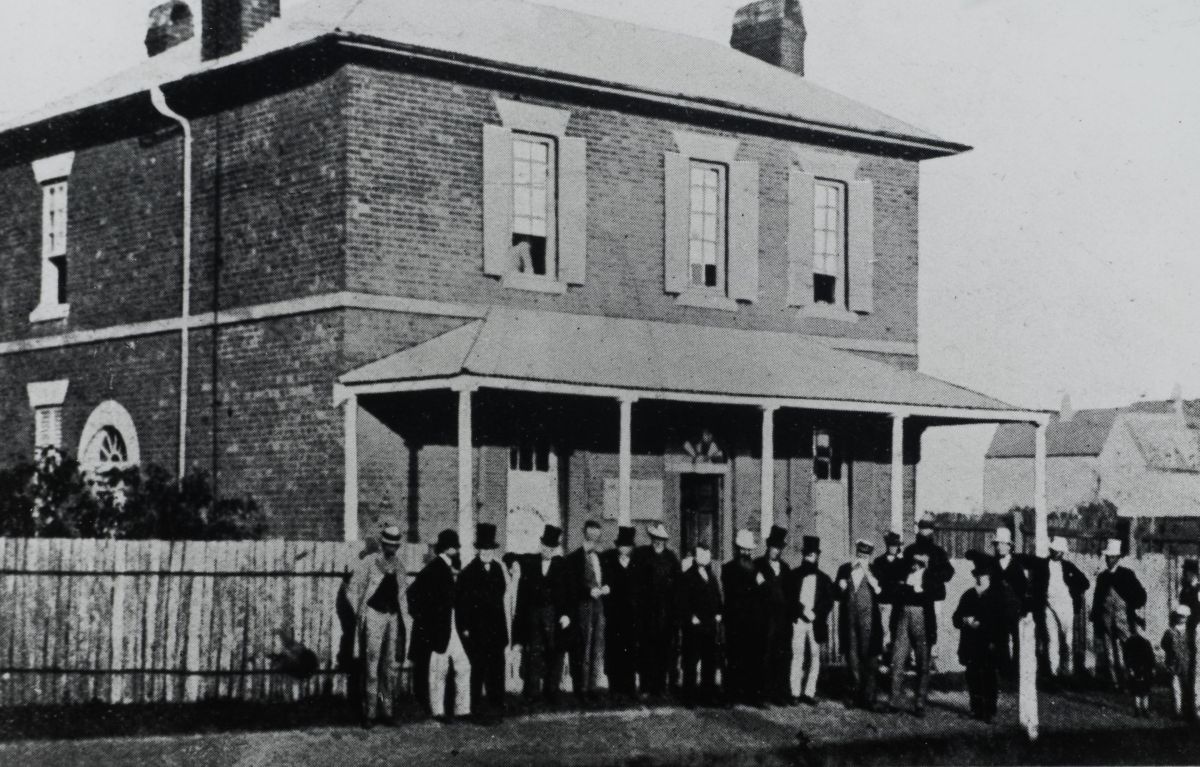
The first council poll was held in Parramatta in December of 1861. The Sydney Morning Herald reported that on the 21st December a nomination for candidates, “with the exception of one little fracas between two individuals, was held in good humour” by a show of hands at the Court House. Only freeholders, leaseholders and householders were eligible to vote. On the 31st December, the Sydney Morning Herald reported the results of the poll to elect the aldermen and auditors. There were 22 candidates and nine aldermen were elected: James Byrnes, James Houison, James Pye, John Taylor, John Williams, John Neale, John Trott, John Good and Henry Harvey.
The City of Parramatta Council Archives hold the minutes of the Parramatta Municipal Council. The first entry, dated 2nd July 1862 provides the account for the election of the first mayor of Parramatta, John Williams:
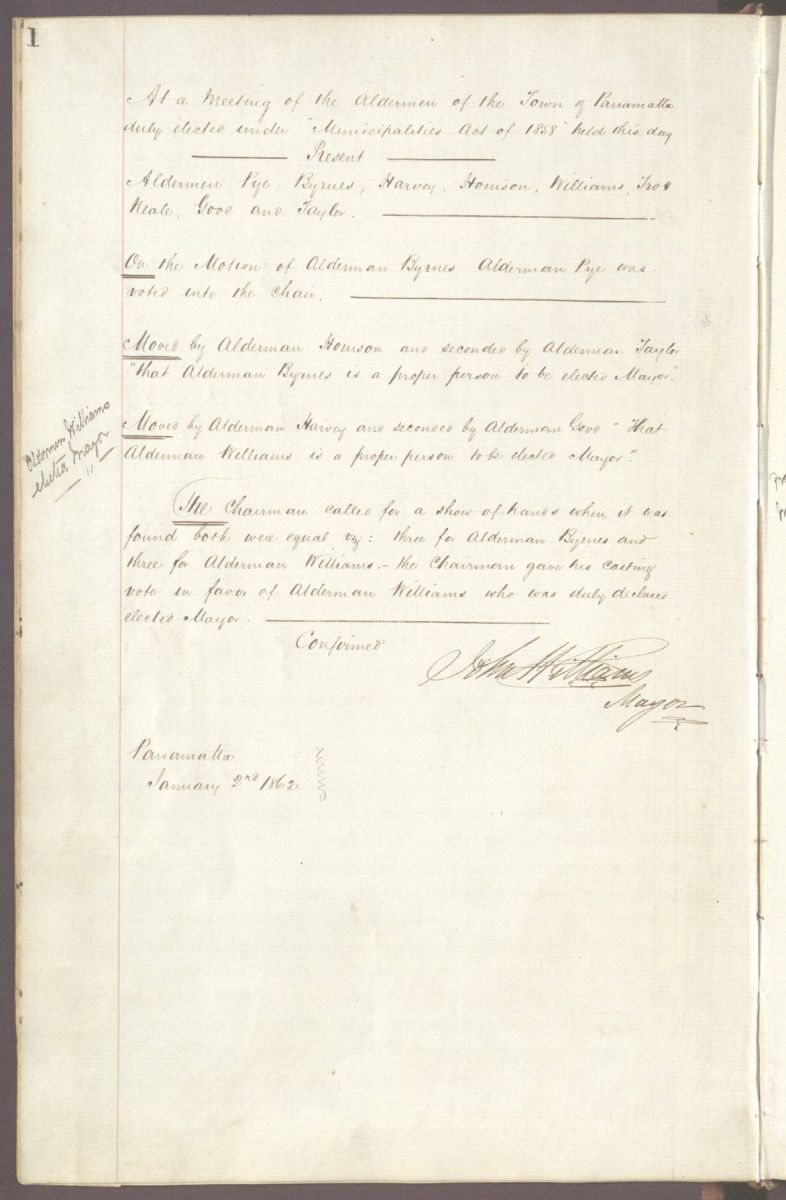
John Williams was a former convict who was transported to Australia for the crime of pick pocketing. His sentiments on being elected mayor were recorded in the Sydney Morning Herald on the 4th January, 1862. The Council Minutes from the 27th January discuss John Williams retiring from the chair as mayor.
On the 17th February 1862, the council minutes reflect that James Byrnes was elected the second mayor of Parramatta:
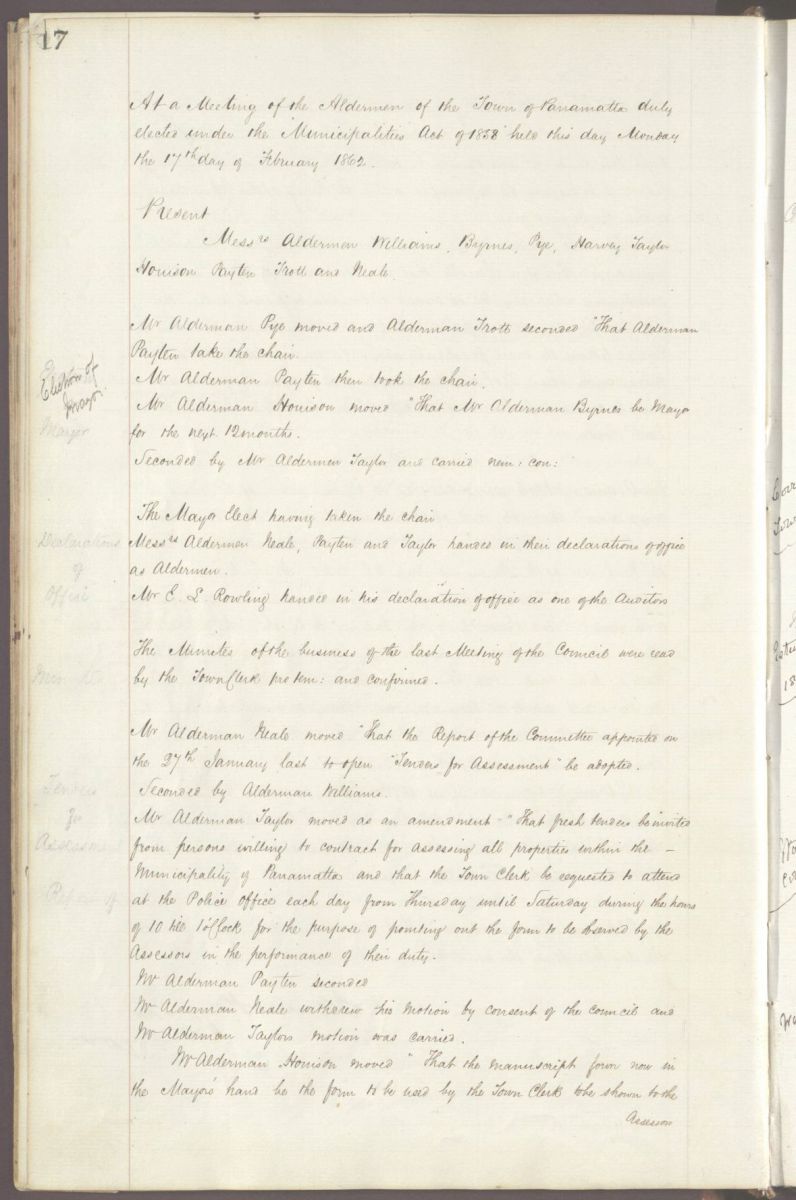
James Byrnes’ sentiments on being elected mayor were recorded in the Empire on the 19th February, 1862.
Another interesting excerpt from the Council minutes dates to the 31st March, 1862, where procuring a design for the seal of the Parramatta Municipal Council is discussed:
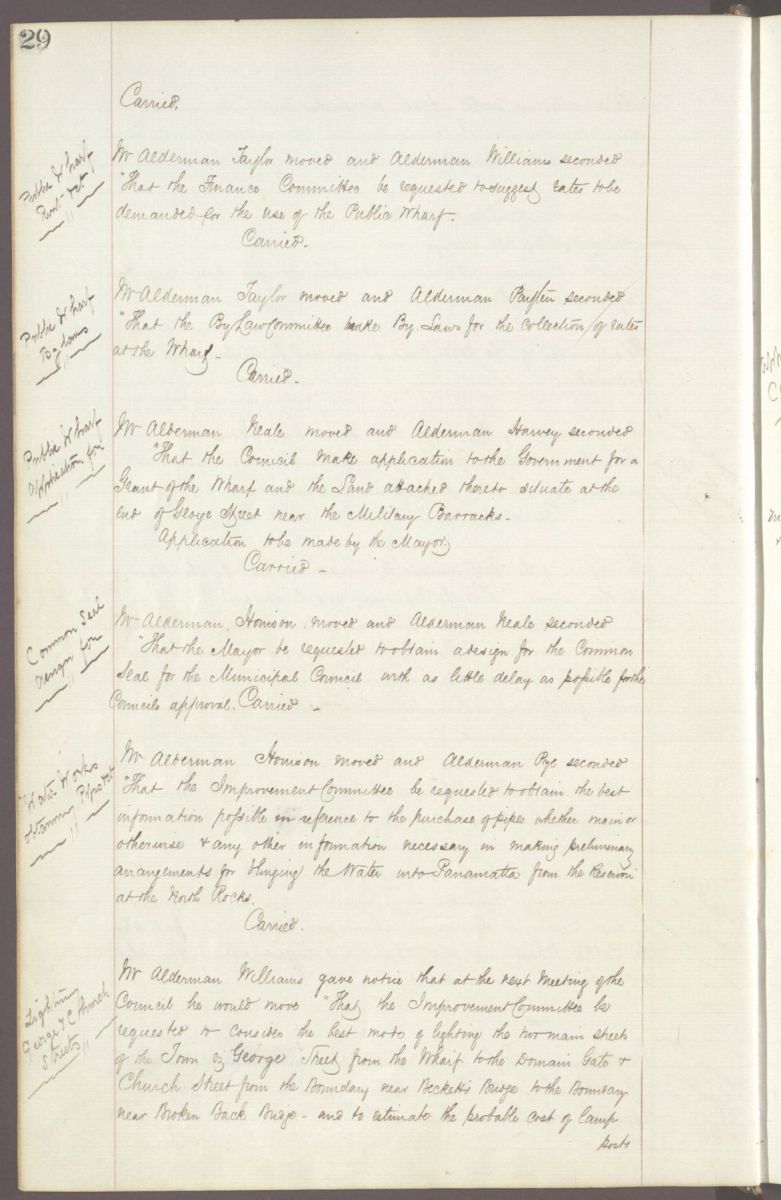
The same minute reveals that Mr J.C Barker was declared the appointed town clerk and Mr J.A Galloway the treasurer to the Municipality of Parramatta.
While early council meetings were held in the Court House, by May of 1862 the functions of a council chamber, offices and town hall were carried out from Elder House (where the Woolpack Hotel now stands.) The house would be used for these functions until 1872. By 1876, council chambers were moved to a rented location in Church Street and the council chambers at the site of the Parramatta Town Hall were formally opened on the 19th August, 1881.
![]()
Paige Davis, Archivist, City of Parramatta, 2021
Select Bibliography
Jervis, J. 1961. “The Cradle City of Australia: A History of Parramatta 1788 – 1961.” The Council of the City of Parramatta, Sydney.
Kelly, A. 2011. “The Development of Local Government in Australia: Focusing on NSW: From Road Builder to Planning Agency to Servant of the State Government and Developmentalism. 1-18 https://ro.uow.edu.au/lawpapers/530.
Larcombe, F.A. 1973. “The Origin of Local Government in New South Wales 1831-58.” The Griffin Press, Adelaide.
Larcombe, F.A. 1976. “The Stabilization of Local Government in New South Wales 1858-1906.” Macarthur Press, Parramatta.


